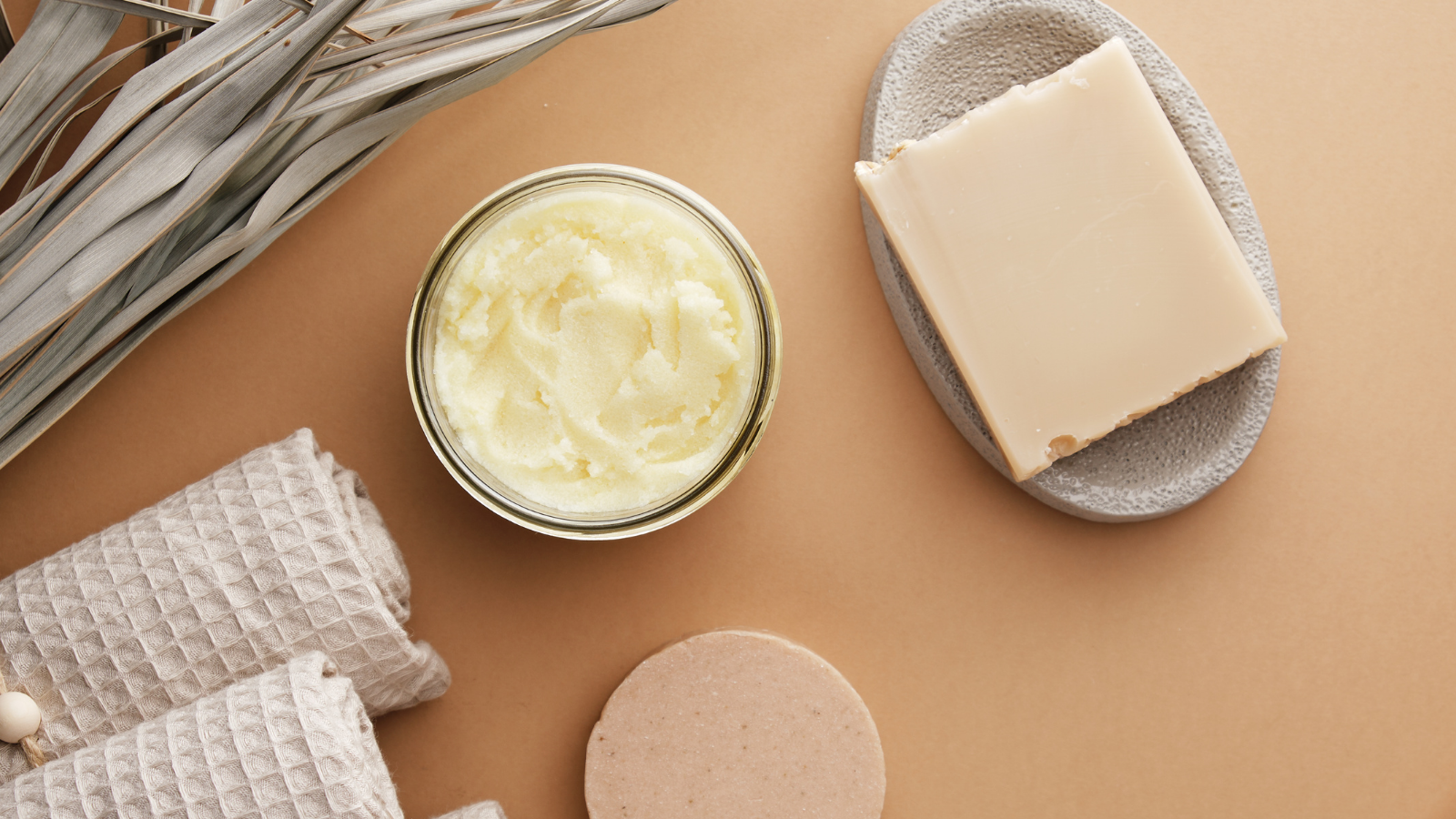 Photo credit: Canva
Photo credit: Canva
Water is the most common ingredient in the formulation of cosmetics, often appearing first on the ingredients list. Depending on the product category, on average beauty products may contain anywhere from 60% to 85% water. Rinse-off products, such as hair care, shower gels or cleansers, may contain up to 95% water, while bar soaps and some make-up products may contain only traces or none at all.
Water scarcity in many regions of the world is prompting the demand for a more conscious use of water in all industries, including cosmetics. With sustainability in mind, water is being increasingly seen as a precious resource, and consumers are more and more looking for water-free cosmetics that contribute to its conservation. Apart from water-free cosmetic formulas, the reduction and reuse of water in the product’s production and supply chain is also key to drastically reduce the water footprint of cosmetic products.
The role of water in cosmetics
Water has been referred to as ‘the universal solvent’ in cosmetics. In combination with emulsifiers, water can be mixed with ‘thicker’ ingredients, such as butters and oils, to facilitate the formation of emulsions used to create creams and lotions. Water also plays an essential role in the extraction and manufacture of many natural raw materials, sometimes in combination with other solvents like ethanol or glycerine.
💡 How much water there is in a cosmetic product?
While it might be difficult to know the exact percentage of water present in a cosmetic, consumers can easily know at a glance if water is the main ingredient in the product’s formulation. If “Water” or “Aqua” are the first words appearing in the list of ingredients, this means that the product contains more water than any other ingredient.
What are the advantages of water-free cosmetics?
Boosted performance
Water-free beauty was born in South Korea a few years ago. Its principle is to reduce (or eliminate) the water content in a product to avoid diluting the active ingredients in the formulation. The ultimate goal of water-free cosmetics is to boost the performance of cosmetic formulas.
Due to the higher use of natural and organic ingredients from various plant oils, butters or water-based extracts, it may also be possible to reduce the amount of added formulation water and ‘boost’ the natural actives for certain cosmetic products such as natural serums and cleansers. Equally, where it might be difficult to eliminate water altogether, added formulation water may be replaced with water obtained from vegetal sources (coconut water or rose water), from plant juices (aloe vera) or from the water-based mixture used to extract the botanical active.
A higher product performance also means that less of the product may be needed upon its use, which can contribute to a more sustainable cosmetic consumption and avoidance of product waste. Some brands claim that solid formats can equal twice or three times the content of their liquid counterparts.
💡 How is water accounted for in the formulation of NATRUE certified products?
Unlike other private, voluntary standards for natural and organic cosmetics, the NATRUE Label criteria only takes water into account in the calculation of natural substances of a cosmetic product if it comes from a vegetal source (floral waters, plant juices, etc.). By excluding water added to the formulation or used to rehydrate dried plant extracts, the NATRUE Label criteria ensures that natural content of ingredients is neither diluted nor inflated, and it guarantees that each product has maximum natural and organic content across a diverse range of product categories.
Format innovation = less packaging, more sustainability
Water-free cosmetic formulas, particular solid substitutes for traditionally liquid format products, present a great basis for product development and innovation. Increasingly popular solid cosmetics come in formats such as bars, powders, balms and butters that are used in skincare, haircare and make-up. Due to their concentrated formulas, they are usually ‘activated’ with water. Some cleansers and serums in powder form can also be dissolved using other cosmetic products, such as moisturisers. A growing number of solid products are designed to be ‘all-in-one’, multifunctional cosmetics that can be used as body, face and hair care.
The switch of many cosmetics from liquid to these solid formats translates into a drastic elimination of plastic packaging traditionally used in cosmetics products, particularly under the rinse-off category. As opposed to their liquid counterparts, solid shampoos, gels and conditioners are mostly packed in easily recyclable materials such as paper or cardboard, or come in reusable packaging such as metal tins or pots made out of wood or cork.
In terms of transportation, cosmetics in solid, powders and balm formats contribute to reducing the product’s carbon footprint as they occupy much less space than their liquid versions. For leisure travelling, solid and powder cosmetics can be very convenient for consumers because they are not subject to the size limitations of liquid formats.
Longer shelf life without added preservatives
Water is a breeding ground for microorganisms, so water-based cosmetics need to pay particular attention when it comes to preservation to prevent contamination and microbiological growth. On the contrary, solid cosmetic product preservation is facilitated by concentrating the formula and reducing or eliminating the water content of the formulation, therefore avoiding the possible need to add preservatives. Cosmetics in powder form favour particularly the product’s preservation as they are never in contact with water as a whole (as opposed, for example, to bars), and only small doses of them are needed to active the product. This is the case of shampoo and cleansers in powder form, whose self-life can be up to five times longer than their liquid versions.
For water-free products directly or indirectly in contact with water (for instance, soap bars when we rub them with our hands), external preservation is key to avoid contamination after each use. For instance, letting beauty solids or bars completely dry before storing them, or placing them on a dry dish or container to avoid that they stay in touch with water can help maintain the product.
A more water-conscious future💙
Developing products with a reduced water or “waterless” footprint is extremely challenging because of the role that water plays in all phases of the production, supply and consumer usage. However, using water more responsibly is the first step towards a significant reduction of the water footprint impact of the cosmetic industry. In 2020, leaders from the conventional cosmetic sector pledged to reduce their water consumption by as much as 60%. On top of water reduction, water reuse and recycling are essential to guarantee that water is used as effectively as possible in all production steps.
Many cosmetic brands within the natural and organic sector have since long worked implemented measures to reuse and recycle water in their production processes, investing in parallel on R&D to develop formulas to replace or eliminate water in their cosmetics. Post-use environmental impact of cosmetics will also be a key part of a future water-conscious industry, ensuring that ingredients can be returned to water sources without posing a risk to the aquatic life.
ℹ️ As the format of water-free cosmetics supports the reduction and elimination of packaging, cosmetic companies are still legally required to provide product information on-pack (namely the ingredients list, responsible person details, etc.), regardless of the format of the cosmetic product.
 Article written by Ana Ledesma, Communications Officer at NATRUE
Article written by Ana Ledesma, Communications Officer at NATRUE



 Deutsch
Deutsch
 English
English
 Français
Français
 Italiano
Italiano